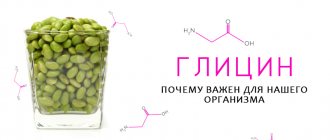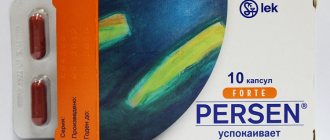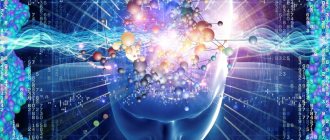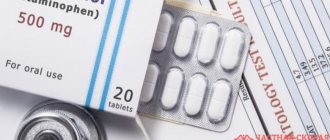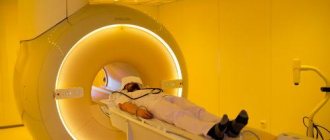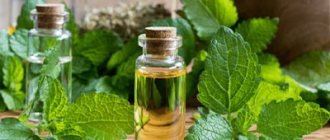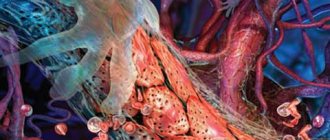Glycine is an amino acid that is involved in the formation of proteins and enzymes in the body, its cleansing and to enhance mental activity.
When ingested into the body (including into the body of a newborn child), this amino acid improves the course of neurological diseases, relieves obsessive states and syndromes; helps speed up recovery and stabilize the situation.
From a biological point of view, Glycine is a neurotransmitter that reduces and regulates the release of fluids that excite the nervous system in the body.
pharmachologic effect
The main substance of the drug is a non-essential amino acid. It is a mediator of nervous excitation. Thanks to its composition, Glycine has a sedative effect, improves metabolic processes in brain tissue, and increases the body's resistance to various damaging factors, including hypoxia.
Pharmacodynamics
Glycine is a regulator of metabolic processes. The drug increases brain activity and relieves the severity of symptoms of psycho-emotional stress. The drug normalizes sleep, improves mood, and alleviates the symptoms of menopause. Glycine is used as part of complex therapy to treat withdrawal symptoms. The drug reduces the severity of the consequences of traumatic brain injuries and cerebrovascular accidents.
Pharmacokinetics
Glycine penetrates into most biological fluids of the body. As a result of the metabolism of the drug, water and carbon dioxide are formed. Therefore, Glycine does not accumulate in tissues.
Changes in the baby's nervous system after birth
During the newborn period, the baby’s body adapts to our world. After cutting the umbilical cord, the supply of oxygen and nutrients from the mother is stopped. At the first cry, the baby's lungs expand and he begins to breathe on his own. There is a restructuring of the pathways through which the child’s organs and tissues will receive the substances necessary for his rapid growth and proper development.
During childbirth, the baby experiences enormous stress, especially on the brain, because the bones of the skull shift somewhat for a more successful passage through the birth path. The baby experiences severe pain, especially if the birth did not go quite smoothly. In addition, cases of cephalohematoma are not uncommon. This brings severe discomfort and pain, which becomes an additional reason for increased irritability and loudness of the newborn.
Initially, the respiratory and cardiovascular systems mature. The child’s nervous system at this moment is not sufficiently developed, and it is this system that changes the most over time.
It is necessary to understand that the number of nerve cells in the cerebral cortex is the same in both a newborn and an adult. The only difference is that in an adult, clear connections and interactions have been formed between the nerve cells of the cerebral cortex through processes. And in the brain of a newborn baby, neurons do not have developed axons and dendrites (this is the name given to the processes of nerve cells, due to which all studied and perceived information about the surrounding world is transmitted), strong connections have not yet been created between them.
A child, when born, goes through a difficult period. The stress level of the birth process, whether natural or induced (through surgery), is always high. During childbirth, the child may experience a lack of oxygen, be accompanied by severe pain, and the possibility of injury during various periods of labor cannot be ruled out.
A newborn experiences psychological stress when he finds himself in a completely unfamiliar environment. For proper adaptation and development of the brain, the baby often requires support in the form of taking various medications.
Indications for use
The main indications for the use of Glycine include:
- prolonged psycho-emotional stress;
- decreased memory and attention;
- consequences of ischemic or hemorrhagic stroke;
- insomnia;
- neuroses;
- encephalopathy of any origin;
- treatment of withdrawal syndrome (hangover) due to alcohol intoxication;
- vegetative-vascular dystonia;
- relief of clinical symptoms during menopause;
- tension headache and dizziness;
- complex therapy of arterial hypertension.
The use of Glycine during breastfeeding is permitted under strict indications and under medical supervision.
The drug is used sublingually (under the tongue) or buccally (between the upper lip and gum). The dosage of the drug is 100 mg. Glycine is prescribed 1 tablet 2-3 times a day. Before using the drug, it is recommended to consult a doctor to determine the required dose, frequency of administration and course duration.
Is it possible to give food sources to a baby?
The amino acid is produced by the body and comes from outside with food. If the baby does not have neurological disorders, then it is not recommended to give it to the baby. It is enough for him to receive aminoacetic acid through breast milk, the main thing is that the mother consumes foods high in glycine. This substance is found in legumes, eggs, seafood, meat, cereals, vegetables and fruits.
Table - Food sources of amino acids
| Products | Amount, mg/100 g |
| Parsley | 1,8 |
| Veal | By 1.6 |
| Beef liver | |
| Rabbit meat | |
| Turkey liver | 1,5 |
| Chicken breast (no skin) | 1,4 |
| Duck | 1,3 |
| Baked mackerel, herring or carp | By 1.1 |
| Peas | |
| Buckwheat | 0,9 |
Under stress, the body requires additional amounts of aminoacetic acid, which creates the need to take supplements.
Glycine overdose
Symptoms of a Glycine overdose occur when the drug is taken incorrectly, as well as when it is consumed simultaneously with alcoholic beverages. In order for signs of drug intoxication to appear, a single dose of 15-20 tablets of the drug is required. The main manifestations of overdose include:
- drowsiness;
- dizziness;
- loss of consciousness;
- vomit;
- nausea;
- stool instability;
- dry mouth;
- sopor;
- bronchospasm;
- anaphylactic shock.
First aid before the doctor arrives is to lavage the stomach. To do this, you need to drink 1.5 -2 liters of water and press on the root of the tongue. If the medicine was taken a long time ago, then in order to alleviate the condition, it is recommended to drink an absorbent drug. Severe forms of Glycine overdose require immediate hospitalization. In the hospital, the severity of the condition is determined and appropriate detoxification therapy is carried out.
Interaction
The effect of taking Glycine largely depends on what medications it interacts with. The combined use of Glycine with sedatives of herbal origin is permitted. This combination is used in the complex treatment of anxiety disorders and sleep disorders.
The interaction of Glycine with other nootropic drugs leads to an increased sedative effect. The combined use of these drugs is acceptable.
When Glycine is prescribed simultaneously with drugs from the tranquilizer group, the inhibition of the central nervous system is additive. This combination of drugs is acceptable in the treatment of neuroses, sleep disorders, and psycho-emotional disorders. Dosages are determined by the attending physician based on the disease and the severity of its condition.
The combined use of Glycine with neuroleptics, antidepressants and anticonvulsants reduces the severity of their side effects.
Glycine analogs
In cases where the use of Glycine is impossible for some reason, it is recommended to replace it with drugs with similar effects. These include Afobazol, Tenoten, Noopept, Valerian, Mexidol, Picamilon, Ginkum, Piracetam, Novopassit, Divaza, Eltacin.
Which is better: Glycine or Afobazole?
Afobazole is an anxiolytic drug. The drug reduces the manifestations of anxiety syndrome and normalizes sleep. The active ingredient Afobazole is morpholinoethylthioethoxybenzimidazole dihydrochloride. Despite the fact that the drug was specially developed to reduce the excitability of the nervous system, it does not have a hypersedative effect. Taking Afobazole does not cause drowsiness or reduce concentration. Indications for taking Afobazole include:
- sleep disorders;
- increased anxiety;
- irritability;
- various diseases, including systemic lupus erythematosus, cerebrovascular disease, dementia of various origins, irritable bowel syndrome and other somatic pathologies;
- premenstrual syndrome;
- the need to remove alcohol and nicotine from the body.
Afobazole and Glycine have a similar mechanism of action. Both drugs are available in tablet form. Afobazole is taken with a sufficient amount of water, and Glycine is placed under the tongue. The differences between drugs lie in the active ingredients. Afobazole is a chemical, Glycine is an amino acid natural to the brain. Therefore, taking Glycine is allowed during pregnancy, unlike Afobazole. To enhance the effect of treating anxiety disorders, co-prescription of medications is indicated.
Which is better: Glycine or Tenoten?
Tenoten is a nootropic drug. It has antiamnestic, antidepressant, antiasthenic, antihypoxic and neuroprotective effects. The active substance of Tenoten is affinity purified antibodies to the brain-specific protein S-100. The main indications for the use of the drug include:
- stress;
- neuroses and neurosis-like conditions;
- memory impairment;
- emotional lability;
- encephalopathy;
- organic diseases of the central nervous system.
Glycine and Tenoten belong to the group of nootropic and anxiolytic drugs. Their action is aimed at activating brain activity. The drugs are available in the form of tablets that are taken sublingually. Tenoten is indicated for increased psycho-emotional tension. To improve memory and attention, it is better to choose Glycine. This drug is also suitable for use during pregnancy. Taking medications together is indicated when prescribing complex therapy.
Which is better: Glycine or Noopept?
Another representative of the group of nootropic drugs is Noopept. The drug has a neuroprotective, antioxidant and vegetative-normalizing effect. The active substance of the drug is N-phenylacetyl-L-prolylglycine ethyl ester. Increases the resistance of brain tissue to various damages. With the development of ischemic stroke, Noopept is prescribed to reduce the volume of the lesion. The drug improves the rheological properties of blood, restores memory and cognitive functions of the brain. Indications for prescribing Noopept are:
- memory and attention disorder;
- cerebrovascular accident;
- encephalopathy;
- recovery period after being in a coma;
- consequences of traumatic brain injury.
Glycine and Noopept help improve brain activity and restore memory. Both drugs are available in tablet form. Glycine is used sublingually. Noopept tablets are taken orally with enough water.
Which is better: Glycine or Valerian?
Valerian is a sedative of plant origin. Has a sedative and antispasmodic effect. The active ingredients of the drug are isovaleric acid and borneol ester. Thanks to its properties, the drug helps normalize sleep and stool, reduces the severity of spasms, and improves cardiac activity. Taking Valerian reduces the risk of migraines and epileptic seizures.
The main indications for taking Valerian include:
- sleep disturbance;
- tachycardia of any origin;
- emotional lability;
- neurodermatitis;
- migraine-type headache;
- complex therapy of arterial hypertension;
- menopause;
- increased gas formation;
- constipation;
- epilepsy attacks.
Valerian has restrictions on its use. These include the first trimester of pregnancy, individual intolerance to the components of the drug, depression and low blood pressure. Valerian and Glycine normalize sleep and reduce the severity of anxiety. One of the differences between the drugs is their composition. The active component of Glycine is an amino acid, Valerian is a completely herbal preparation. Taking Valerian can be accompanied by a large number of side effects. Before using medications, it is recommended to consult a doctor. The specialist will conduct the necessary diagnostics and, based on the results obtained, choose a medicine.
Which is better: Glycine or Mexidol?
Mexidol is an antioxidant drug. The active substance of the drug is ethylmethylhydroxypyridine succinate. Mexidol increases the body's resistance to various damaging factors, helps normalize blood microcirculation in the brain, and reduces the severity of alcohol intoxication. The drug improves the rheological properties of blood, stabilizes the processes of wakefulness and sleep. Indications for prescribing Mexidol are:
- consequences of traumatic brain injury;
- neuroses and neurosis-like conditions;
- withdrawal syndrome;
- vegetative dystonia;
- cardiac ischemia;
- cerebrovascular pathology;
- cognitive impairment;
- consequences of acute cerebrovascular accidents.
Glycine and Mexidol have a sedative and nootropic effect. Helps normalize brain activity, restore sleep and reduce the severity of anxiety. The differences between the drugs are in the form of release, active substances and additional properties. Glycine is produced in the form of tablets for oral administration. Mexidol is available in the form of tablets, injection solution and toothpaste. Glycine contains an amino acid that is natural to the brain. The active substance of Mexidol is ethylmethylhydroxypyridine succinate.
Which is better: Glycine or Picamilon?
Picamilon is a drug from the nootropic group. It has an antioxidant, vasodilator and sedative effect. The active substance of the drug is nicotinoyl gamma-aminobutyric acid. Picamilon improves the processes of memory, thinking and attention. Thanks to its sedative effect, the medicine helps reduce the severity of anxiety and normalize sleep. Indications for the use of Picamilon are:
- diseases of the brain of vascular, inflammatory or traumatic origin;
- depression;
- consequences of alcohol abuse;
- migraine-type headache;
- excessive mental and physical stress;
- prolonged stress;
- conditions accompanied by nervous exhaustion;
- open angle glaucoma.
Unlike Glycine, Picamilon has a more pronounced effect. However, its side effects appear much more often and to a greater extent. Glycine has a gradual effect, noticeable after a course of administration. The combined use of drugs is allowed. They complement each other's action. This combination of drugs is actively used by doctors for adolescents during periods of mental overload.
Which is better: Glycine or Ginkoum?
Ginkoum is a sedative of plant origin. The active substance of the drug is ginkgo biloba extract. The action of Ginkoum is associated with improved blood microcirculation in the brain and a positive effect on memory. A course of taking the drug has an antioxidant effect, reducing the risk of developing cancer. The main indications for the use of the drug are:
- cerebrovascular accident;
- dizziness;
- noise in ears;
- cerebrovascular diseases;
- weakness, increased fatigue;
- migraine-type headache;
- high blood pressure;
- encephalopathy of various origins;
- a condition caused by brain hypoxia.
Glycine and Ginkoum are nootropic drugs of plant origin. The range of their actions and indications is largely similar. Glycine is available in tablet form. Ginkoum is produced in the form of capsules for oral administration. The drugs are well tolerated. Before use, it is recommended to consult a doctor to determine the dosage, frequency of administration and course duration.
Which is better: Glycine or Piracetam?
Piracetam is a nootropic drug. It is a cyclic derivative of gamma-aminobutyric acid. The active ingredient of the drug is piracetam. Thanks to its properties, the drug increases the body’s resistance to various toxic substances, minimizes the risk of developing seizures, helps improve the functional activity of the brain, and activates its metabolic processes. The main indications for the use of Piracetam include:
- memory impairments of various origins;
- dementia;
- cortical myoclonus;
- cerebrovascular accidents;
- complex therapy of alcohol intoxication;
- chronic fatigue;
- coma;
- neurasthenia.
Both drugs have a nootropic effect. Glycine is produced in the form of tablets for oral administration. Piracetam is produced in the form of tablets and solution for injection.
Which is better: Glycine or Novopassit?
Novopassit is one of the sedative medicines based on herbal components. The drug has no anti-anxiety and sedative effect. Novopassit helps reduce the severity of anxiety, normalizes sleep, and eliminates tension headaches. Due to its properties, the drug is used to relieve premenstrual syndrome and menopausal symptoms. Novopassit is prescribed for the following conditions:
- migraine;
- conditions accompanied by constant nervous tension;
- neuroses and neurosis-like conditions;
- tension headache;
- sleep disturbance;
- menopause;
- psychogenic itching;
- irritable bowel syndrome.
Both drugs affect the central nervous system. They have a minimal number of contraindications. Novopassit is available in the form of tablets and solution for oral administration. Glycine is produced in the form of tablets for sublingual use. Novopassit contains plant components in combination with semi-synthetic guaifenesin. Glycine is an amino acid that is naturally found in the brain.
Which is better: Glycine or Divaza?
A representative of the group of nootropic drugs is Divaza. The drug has neuroprotective, anxiolytic, antidepressant, antioxidant, neurometabolic and sedative effects. Divaza helps to increase the brain's resistance to the effects of toxic substances, as well as to hypoxia. The medication improves cerebral circulation, memory, thinking and attention. The active ingredients of the drug are antibodies to the brain-specific protein S-100 and antibodies to endothelial NO synthase. Indications for the use of Divaza include:
- ischemic stroke;
- memory and attention disorder;
- emotional lability;
- consequences of traumatic brain injury;
- symptoms of vegetative-vascular dystonia;
- neuroinfections;
- long-term stress loads.
Divaza and Glycine are used to improve brain activity, stabilize the emotional background, and restore cognitive functions of the brain. The differences between the drugs lie in the mechanisms of action and active substances. Divaza contains antibodies to the brain-specific protein S-100 and antibodies to endothelial NO synthase. Glycine is a naturally occurring amino acid in the brain. Divaza promotes the regeneration of brain cells, increases the speed of transmission of nerve impulses and improves memory. Glycine reduces the excitability of brain cells, normalizes sleep and restores memory. Taking Divaza is contraindicated for persons under 18 years of age. Glycine is approved for use from school age.
Which is better: Glycine or Eltacin?
Eltacin is an antioxidant combination drug. The drug contains glycine, L-glutamic acid and L-cysteine. Eltacin helps normalize metabolic processes in the body, increases its resistance to negative factors and hypoxia, increases endurance and shortens the recovery period after intense physical activity. Indications for prescribing the drug are:
- autonomic dysfunction;
- chronic overexertion;
- alcohol intoxication;
- chronic heart failure;
- recovery after prolonged physical activity.
Glycine and Eltacin have a similar composition, mechanism of action and effects. Thanks to the enhanced composition, Eltacin has more pronounced properties. Concomitant use of drugs is prohibited. This is due to the possibility of glycine overdose. The dosage, frequency of administration and duration of the course should be determined by the doctor.
Side effects, allergies
Glycine for newborns is one of the safest substances used for neurological diseases. However, even this can cause adverse reactions.
The amino acid is poorly tolerated when doses are exceeded, the dosage regimen is violated, or when combined with sleeping pills and tranquilizers. In children, after taking a drug based on it, the following adverse reactions may occur:
- increased psycho-emotional excitability, anxiety, restlessness;
- decreased blood pressure;
- headache, dizziness;
- worsening sleep;
- mental disorders;
- fainting;
- allergies in the form of itching, skin rash, red spots, swelling, hoarseness, cough.
The first time after starting treatment, it is necessary to monitor the reaction of the baby’s body. If side effects occur, you should stop using the drug and go to the hospital.
The benefits of aminoacetic acid are described in the video:
Glycine for infants and newborns
Glycine during pregnancy and lactation
There are still no studies confirming the absolute safety of the drug for pregnant women. Therefore, its use during pregnancy is strictly indicated when indicated and under the supervision of a doctor. The dosage of the drug is selected individually based on the characteristics of the woman’s body.
The use of Glycine during lactation is permitted. The drug has a mild effect on the body. A small amount of the medicine passes into breast milk. The permitted dosage is selected individually for each woman.
How to use the drug
The tablet must be dissolved under the tongue, but this method is not suitable for an infant. Glycine is given to newborns in the form of a powder or solution. There are such methods of application:
- Applying the drug to the pacifier. The tablet must be crushed, then the pacifier should be rolled in the resulting powder and given to the newborn. The medicine is sweet, so the baby will suck the pacifier with pleasure. Instead of a pacifier, you can also use your finger - also roll it in powder and coat the inside of the baby's cheek with it.
- Mixing the drug with water, infant formula or breast milk. Dilute the powder with a few drops of liquid and give the baby to drink from a spoon.
It is better to buy glycine for babies in powder form. It produces a quick therapeutic effect.
The amino acid in its pure form may not be given to children under 1 year of age. It can enter their body along with milk if the nursing mother takes the medicine. Of course, the effectiveness of the drug decreases, since the acid is first consumed by the woman’s body, and its excess is passed on to the baby.
Children over 1 year of age can dissolve the medicine on their own.
Solgar, Glycine, 500 mg, 100 Veggie Caps
★★★★★
787 rub.
More details
